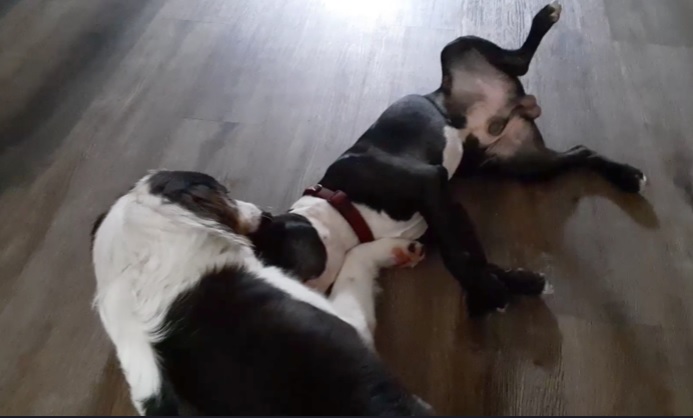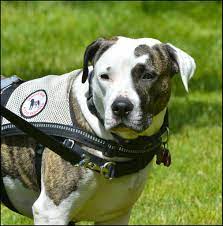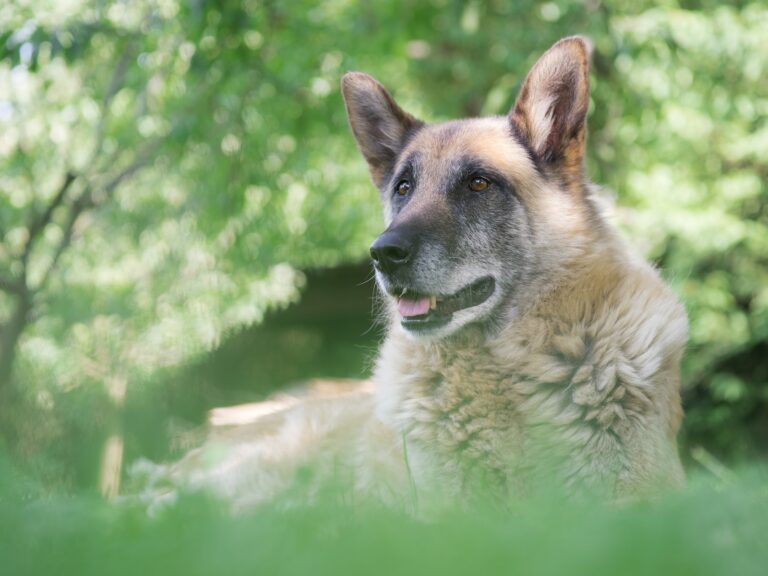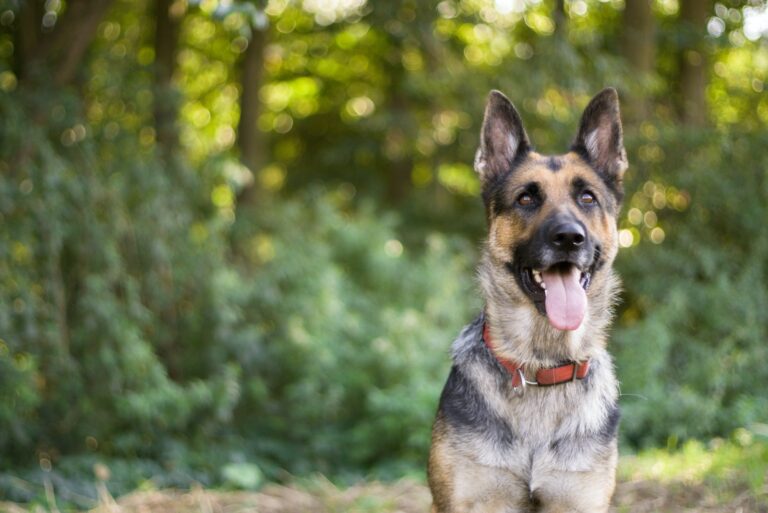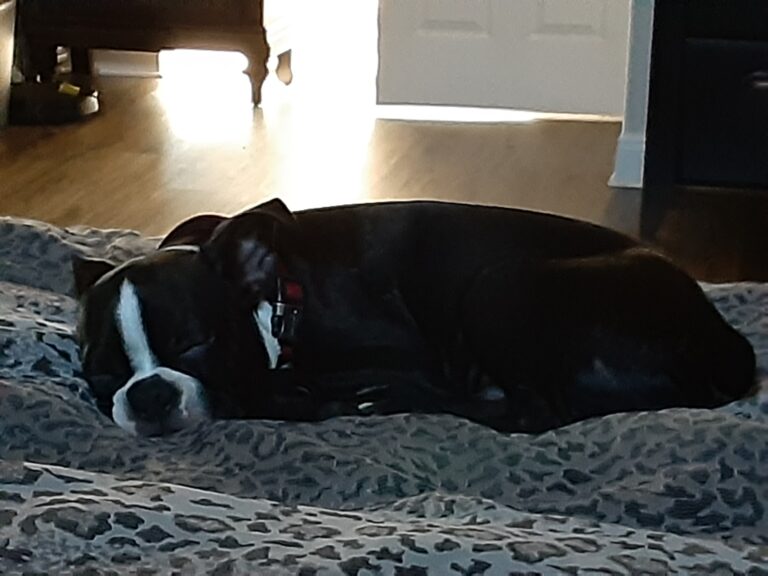Recall training for dogs
Recall training is all about teaching your dog to come to you promptly when called. It is a critical skill that ensures your dog’s safety, especially in situations where they are off-leash. Whether you have a puppy or an adult dog, it is never too late to start recall training. In this guide, we will walk you through the steps to effectively train your dog to come when called.
1. Start Early and Be Consistent
Starting recall training at the earliest opportunity, ideally during your dog’s puppyhood, lays a solid foundation for their lifelong obedience and safety. Puppies are like sponges, soaking up information and forming habits, which makes it an ideal time to introduce them to recall commands. To set the stage for effective recall training, consistency is your greatest ally. It is essential to select a specific word or phrase that will serve as your recall command. This word should be clear, concise, and easy to remember. Often, dog owners choose words like “come,” their dog’s name, or another short, distinct phrase. The choice of command is not as critical as your consistency in using it. Dogs are excellent at picking up patterns and associating them with specific actions. By consistently using the same recall command, you help your dog make a clear connection between the word and the action of coming to you. This association forms the basis of their understanding, making it easier for them to respond reliably to your call, whether they are exploring off-leash in the park or playing in the yard. Consistency does not end with the choice of command; it extends to how and when you use it. Be sure to use the recall command consistently every time you want your dog to come to you. By doing so, you will create a strong and reliable recall that will benefit both you and your furry companion throughout their life. Therefore, start early, stay consistent, and watch as your dog masters the art of coming when called.
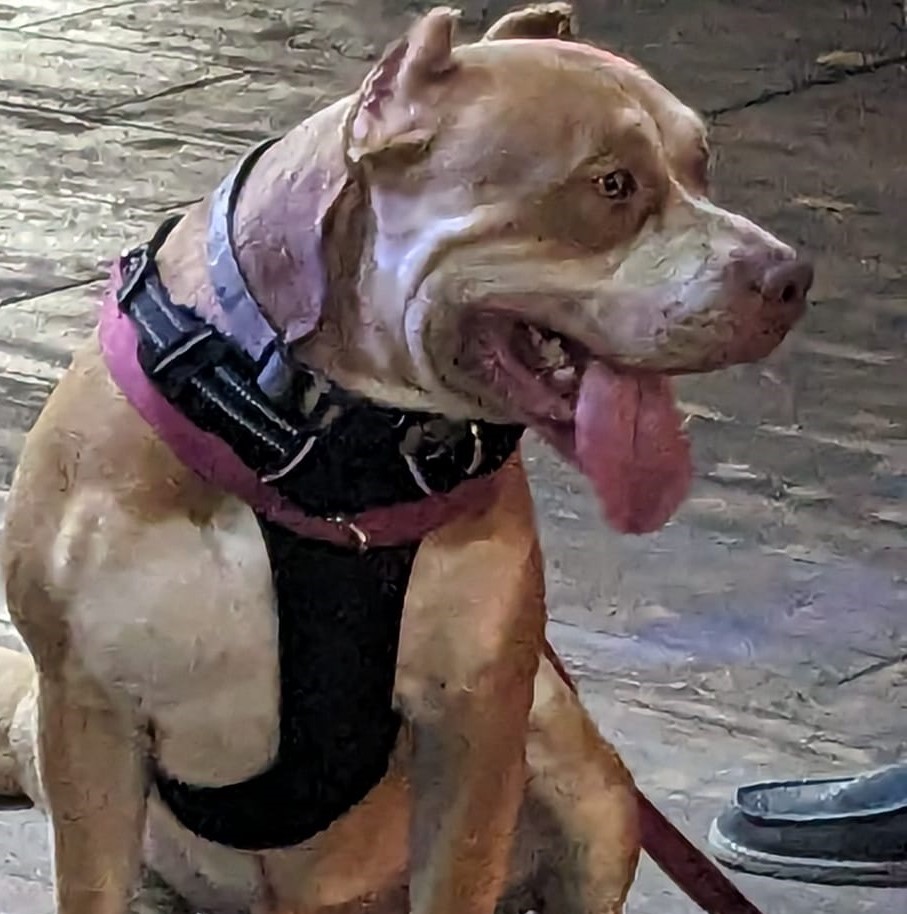
2. Use Positive Reinforcement
Positive reinforcement is the cornerstone of recall training. This method involves rewarding your dog when they exhibit the desired behavior – coming to you when called. Timing is Crucial: Reward your dog immediately after they respond to your recall command. This immediate reinforcement helps them connect the reward with their action, reinforcing the desired behavior. Opt for rewards that genuinely excite your dog. Whether it is their favorite treats, a beloved toy, or simply enthusiastic praise, these high-value rewards boost motivation and make responding to your call irresistible. Shower your dog with praise and affection when they come to you. An upbeat and affectionate tone of voice conveys your joy, and physical affection like petting and cuddles further reinforces the positive experience. Consistency plays a crucial role in recall training. Ensure that every time your dog comes when called, they receive rewards. This consistency helps them understand that the action leads to pleasant outcomes without fail. Keep things fresh by varying the rewards you offer. Experiment with different types of treats or combine treats with playtime. The element of surprise keeps rewards exciting and unpredictable. As your dog becomes more dependable in their recall, you can slowly reduce the frequency of treat rewards. However, never skimp on praise and affection, which should remain constant to reinforce the behavior. Recall training should be an enjoyable and engaging experience for your dog. It should be a positive, fun activity, not a tedious task. Incorporate games, play, and create memorable bonding moments during training sessions. By consistently applying positive reinforcement techniques, you create a compelling incentive for your dog to respond promptly to your recall command. They begin to associate coming to you with rewards and a great time, making it a behavior they willingly repeat. Positive reinforcement not only guarantees a reliable recall but also deepens the connection between you and your furry friend. Recall training, when done effectively, enhances your dog’s obedience and ensures their safety when off-leash, whether you are in a park, on a hike, or simply enjoying the outdoors together. Therefore, start early, stay consistent, and watch as your dog masters the art of coming when called.
3. Begin recall training indoors
When embarking on recall training with your dog, it is wise to begin with baby steps. Start by calling your dog from short distances initially. This serves as a gentle introduction to the recall command and allows your dog to build confidence in responding promptly. The rationale behind starting with short distances is to set your dog up for success. In these early stages, you want to create a scenario where it is easy for your dog to excel. This positive reinforcement of success builds their understanding that responding to your recall command is both rewarding and achievable. As your dog becomes more proficient and reliable in their response, you can gradually increase the distance from which you call them. This gradual progression ensures that your dog is continuously challenged but not overwhelmed. It is a bit like leveling up in a video game – you start with simpler tasks and gradually advance to more complex ones as you gain proficiency. This incremental approach is particularly effective because it allows your dog to develop confidence in their recall abilities at their own pace. It also prevents frustration or confusion, ensuring that your dog associates the recall command with positive outcomes throughout the training process. Remember, patience is key during recall training. Every dog is unique, and their progress may vary. Celebrate each small victory, and be prepared for occasional setbacks. By gradually increasing the distance as your dog becomes more reliable, you are laying a strong foundation for a recall that works consistently, whether your dog is near or far. This skill is invaluable, ensuring both their safety and your peace of mind during off-leash adventures.
4. Use a Leash Initially
In the early stages of recall training, it is a prudent move to attach a long leash or a training lead to your dog’s collar. This strategic step ensures that you maintain control in case your dog does not respond immediately to your recall command. The long leash or training lead serves as a safety net during this phase of training. It provides you with the ability to gently guide your dog back to you if they hesitate or become distracted. This added control is particularly valuable when you are introducing your dog to recall training in environments with new distractions or where they may not be fully comfortable. By having this physical connection, you can gently guide your dog towards you while still using positive reinforcement. It is a gentle way of ensuring compliance without resorting to force or punishment, which can have adverse effects on your dog’s willingness to respond to the recall command. As your dog progresses and becomes more reliable in their recall, you can gradually reduce the reliance on the long leash or training lead. However, it remains a useful tool, especially in situations where safety is a concern, such as near roads or in unfamiliar environments. By incorporating the long leash or training lead during early training sessions, you enhance the effectiveness of recall training, ensuring that your dog learns to come when called in a controlled and safe manner. This step contributes to their safety and your peace of mind when enjoying off-leash adventures together.
5. Gradual Distractions during recall training
As your dog’s recall skills continue to improve, it is time to up the ante by practicing in environments with increased distractions. Initially, it is prudent to start your recall training in areas with minimal disturbances, allowing your dog to grasp the fundamentals. However, as they become more proficient, it is essential to challenge them with more stimulating surroundings. The idea behind introducing distractions gradually is to ensure that your dog’s recall remains dependable regardless of the environment. Just as students progress from basic math to more complex equations, your dog needs to build up their recall skills in stages. This approach is designed to help your dog stay focused and responsive amid tempting diversions. Begin by practicing recall in relatively calm and uneventful settings. These can be your backyard, a quiet corner of a park, or any place with minimal distractions. In these environments, your dog can refine their recall abilities without too many competing stimuli. As your dog grows more confident and consistent in their response, it is time to venture into busier, more distracting settings. This could mean moving to a bustling park, a pet-friendly beach, or a lively urban environment. These scenarios provide an array of sights, sounds, and smells that can easily grab your dog’s attention. By progressing in this manner, you gradually build your dog’s resilience to distractions. They learn to prioritize your recall command even when faced with enticing alternatives. It is like honing a musician’s skills: you start with simple melodies and gradually introduce more complex compositions. Throughout this process, remember to maintain positive reinforcement. Reward your dog generously when they respond correctly in challenging environments. This encourages them to stay attentive and obedient, even when distractions abound.
6. Consistent Rewards
Continue to reward your dog every time they come to you when called, even as they become more reliable. Use treats, praise, and play as rewards. Never punish your dog for not coming when called. Punishment can make your dog associate coming to you with something negative, which is counterproductive. Once your dog demonstrates proficiency in recall within controlled environments, it is time to put their training to the test in real-life situations. These real-world scenarios, such as visits to the dog park or hiking adventures, provide a dynamic and unpredictable backdrop that challenges your dog’s recall abilities in new ways. Training recall in real-life scenarios ensures that your dog’s responsiveness extends beyond controlled settings. It equips them to heed your call amid distractions and temptations, enhancing their safety and allowing you to relish off-leash adventures confidently and securely.
7. Proofing in recall training
Proofing is a vital aspect of recall training, and it involves honing your dog’s ability to respond to your recall command reliably, no matter the circumstances. This means practicing recall in diverse situations and with various distractions, gradually increasing the difficulty level to ensure your dog’s response remains rock-solid. The process of proofing is akin to strengthening a bridge – you systematically assess its structural integrity by subjecting it to different stresses and weights. Similarly, with proofing, you are fortifying your dog’s recall by introducing them to new challenges in a controlled manner. Begin by training your dog to come when called in familiar settings with minimal distractions. Once they have mastered this, it’s time to diversify. Start by introducing mild distractions, such as toys or mild noises. As your dog becomes more adept at maintaining their focus, progress to more challenging scenarios, like recalls during playtime or around other dogs. The key to successful proofing is gradual progression. Avoid overwhelming your dog with distractions too quickly, as this can lead to confusion or frustration. Instead, systematically expose them to more complex situations and stimuli at a pace that allows them to adapt and succeed. Throughout the proofing process, maintain consistent positive reinforcement. Reward your dog for responding correctly, even when faced with heightened distractions. This reinforcement strengthens their understanding that responding to your recall command is non-negotiable. Proofing is an ongoing practice, and it is essential to revisit it regularly, even after your dog has become proficient in recall. Repetition in different environments and under various circumstances ensures that their recall remains reliable in all situations.
8. Safety First
In situations where safety is paramount, such as near busy traffic or in the presence of wildlife, it’s crucial to prioritize your dog’s well-being. In these potentially hazardous scenarios, relying solely on recall may not be sufficient. Instead, using a leash is the safest and most responsible course of action to ensure your dog’s safety. Leashes act as a physical barrier between your dog and potential dangers. They provide immediate control, preventing your dog from wandering into risky situations or becoming a nuisance to wildlife. When your dog is securely leashed, you have the peace of mind that you can prevent accidents or confrontations that could harm your pet or others. Even the most well-trained dogs can become momentarily distracted or overwhelmed by their instincts when faced with unexpected situations, such as the sudden appearance of a squirrel or the noise of oncoming traffic. During these moments, relying solely on recall may not be enough to guarantee their safety. Using a leash in high-risk environments is not a sign of a lack of trust in your dog’s training but rather a responsible approach to ensuring their safety. It complements recall training by providing an extra layer of protection in situations where immediate restraint is necessary. Responsible dog ownership includes being aware of your surroundings and assessing potential risks. When in doubt, use a leash to maintain control, especially in situations where safety is a concern. This precaution ensures that you can enjoy your time together with your dog without unnecessary worries, knowing that their safety is your top priority.
Remember, recall training is an ongoing process. Even when your dog becomes proficient, continue to reinforce the behavior regularly to maintain a strong recall. With a well-trained recall, you can enjoy off-leash adventures with confidence, knowing that your dog will come when called.

